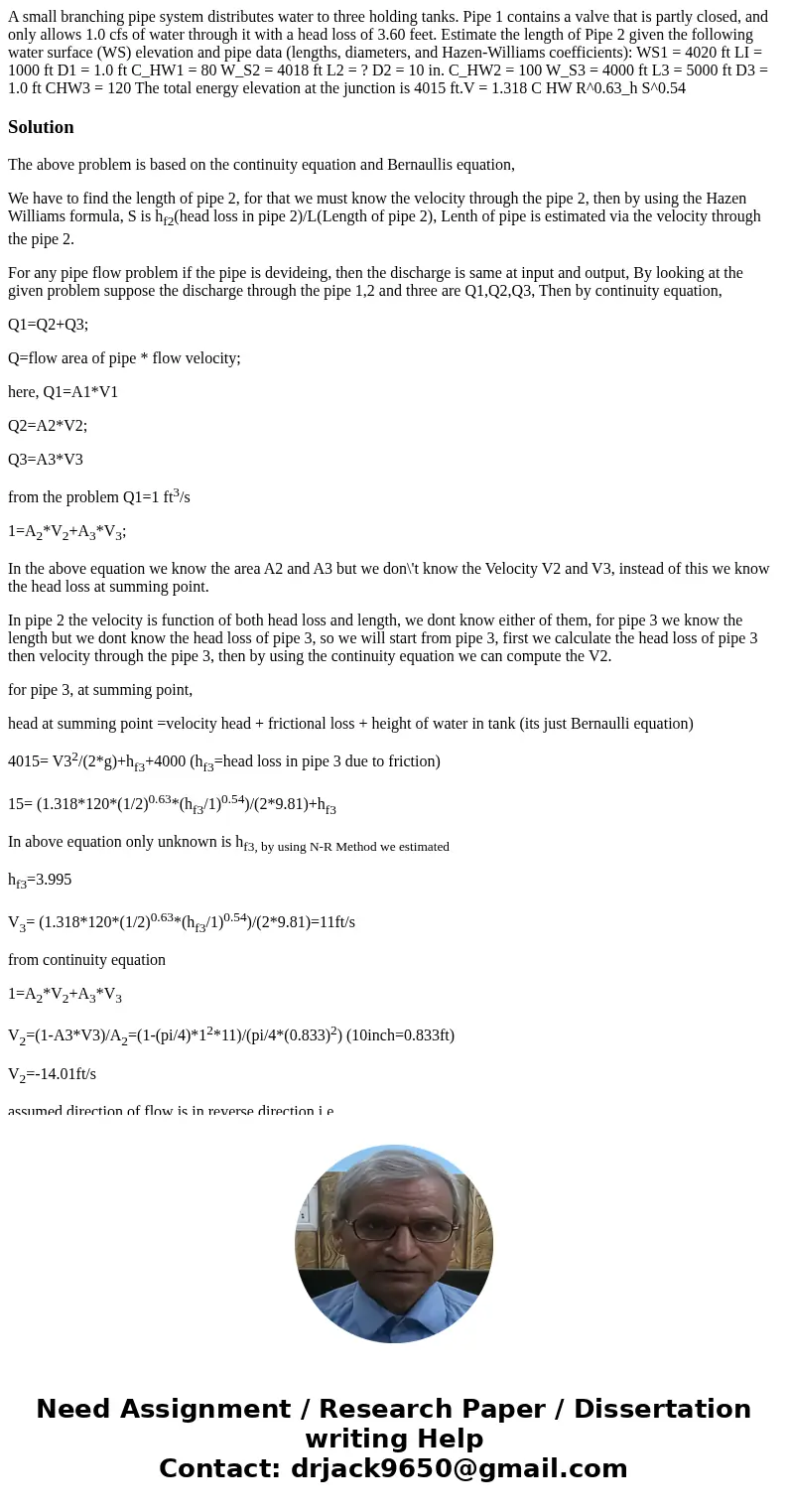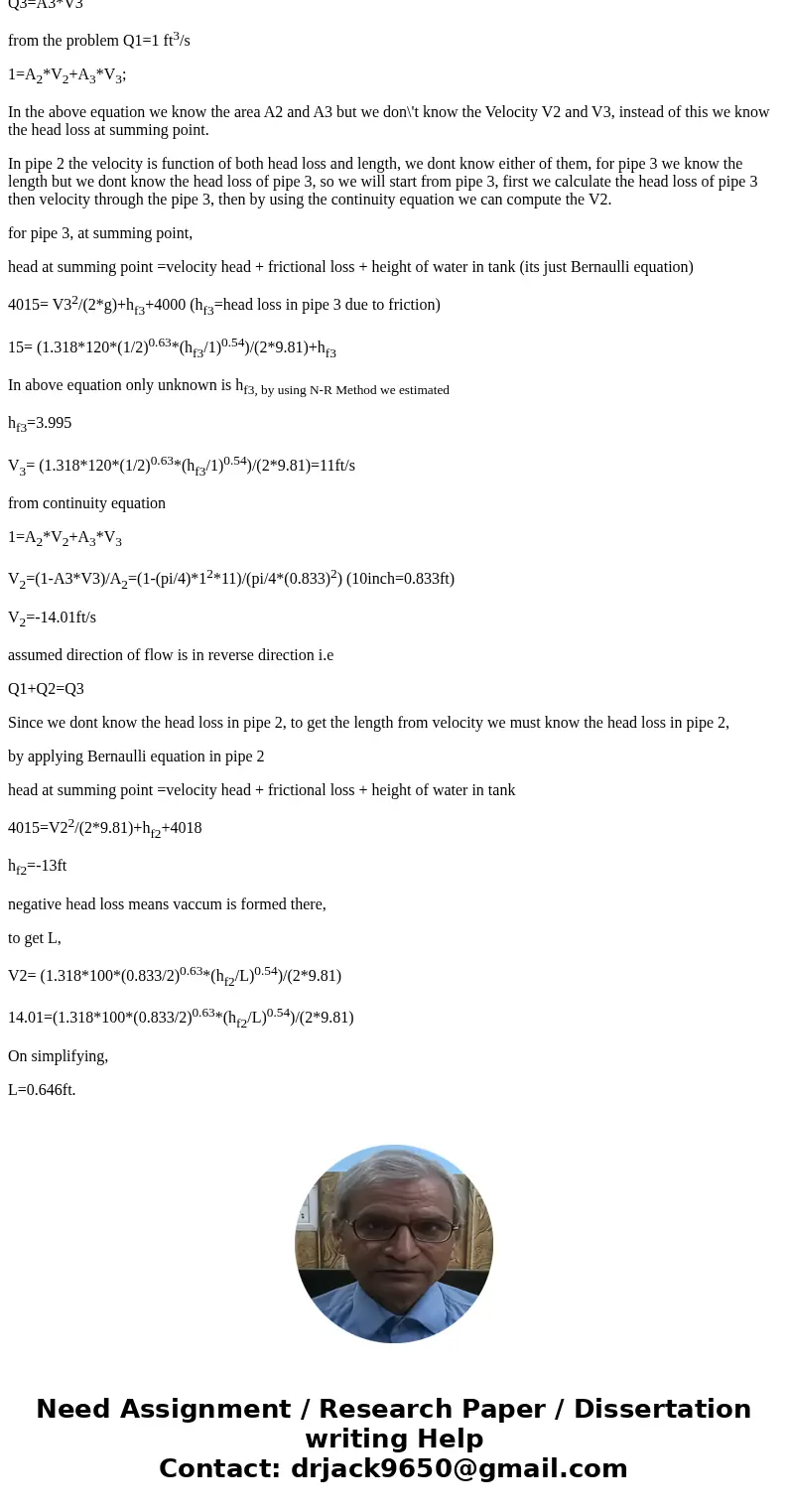A small branching pipe system distributes water to three hol
Solution
The above problem is based on the continuity equation and Bernaullis equation,
We have to find the length of pipe 2, for that we must know the velocity through the pipe 2, then by using the Hazen Williams formula, S is hf2(head loss in pipe 2)/L(Length of pipe 2), Lenth of pipe is estimated via the velocity through the pipe 2.
For any pipe flow problem if the pipe is devideing, then the discharge is same at input and output, By looking at the given problem suppose the discharge through the pipe 1,2 and three are Q1,Q2,Q3, Then by continuity equation,
Q1=Q2+Q3;
Q=flow area of pipe * flow velocity;
here, Q1=A1*V1
Q2=A2*V2;
Q3=A3*V3
from the problem Q1=1 ft3/s
1=A2*V2+A3*V3;
In the above equation we know the area A2 and A3 but we don\'t know the Velocity V2 and V3, instead of this we know the head loss at summing point.
In pipe 2 the velocity is function of both head loss and length, we dont know either of them, for pipe 3 we know the length but we dont know the head loss of pipe 3, so we will start from pipe 3, first we calculate the head loss of pipe 3 then velocity through the pipe 3, then by using the continuity equation we can compute the V2.
for pipe 3, at summing point,
head at summing point =velocity head + frictional loss + height of water in tank (its just Bernaulli equation)
4015= V32/(2*g)+hf3+4000 (hf3=head loss in pipe 3 due to friction)
15= (1.318*120*(1/2)0.63*(hf3/1)0.54)/(2*9.81)+hf3
In above equation only unknown is hf3, by using N-R Method we estimated
hf3=3.995
V3= (1.318*120*(1/2)0.63*(hf3/1)0.54)/(2*9.81)=11ft/s
from continuity equation
1=A2*V2+A3*V3
V2=(1-A3*V3)/A2=(1-(pi/4)*12*11)/(pi/4*(0.833)2) (10inch=0.833ft)
V2=-14.01ft/s
assumed direction of flow is in reverse direction i.e
Q1+Q2=Q3
Since we dont know the head loss in pipe 2, to get the length from velocity we must know the head loss in pipe 2,
by applying Bernaulli equation in pipe 2
head at summing point =velocity head + frictional loss + height of water in tank
4015=V22/(2*9.81)+hf2+4018
hf2=-13ft
negative head loss means vaccum is formed there,
to get L,
V2= (1.318*100*(0.833/2)0.63*(hf2/L)0.54)/(2*9.81)
14.01=(1.318*100*(0.833/2)0.63*(hf2/L)0.54)/(2*9.81)
On simplifying,
L=0.646ft.


 Homework Sourse
Homework Sourse